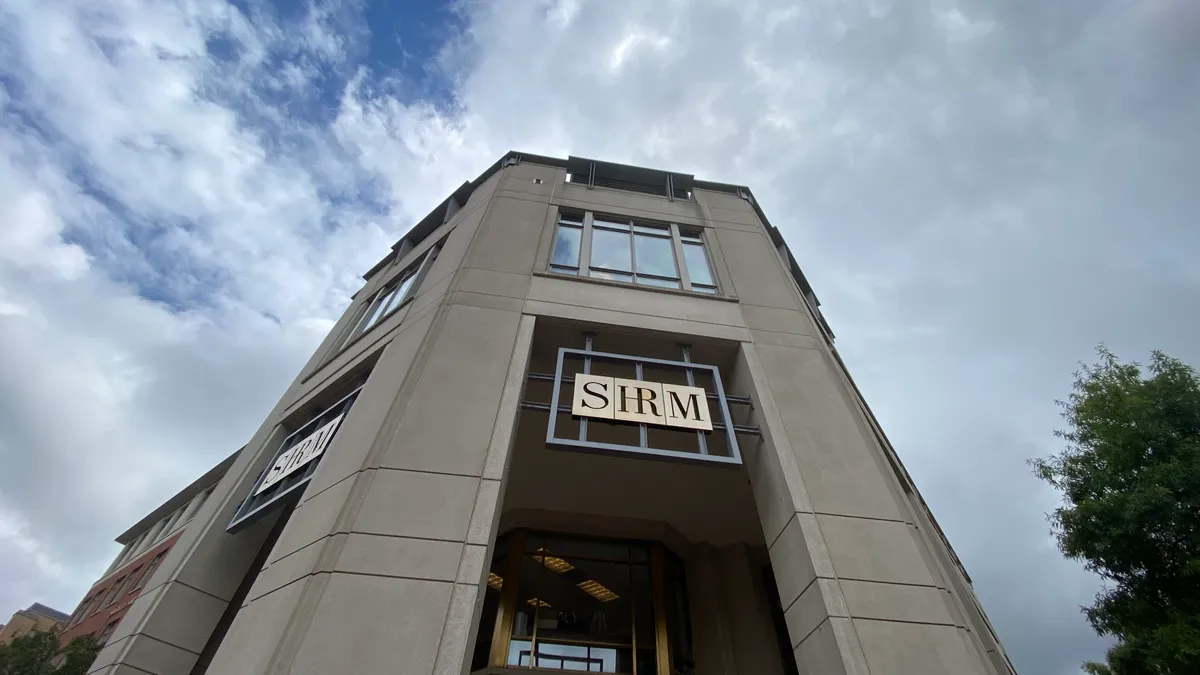The EEOC, like other executive branch arms, will likely be quieter in the coming administration, thanks to President Trump's promise to deregulate and simplify.
As always, the commission must prioritize activities based on limited funding and time, but those priorities haven’t been firmly established under the new administration as of yet. Retaliation and discrimination lawsuits won't go away, but HR may get a little breathing room from an EEOC that may be more picky about the cases it takes on.
HR Dive spoke with Barry Hartstein, co-chair of the EEO & Diversity Practice Group at the Chicago office of Littler Mendelson, to discern what employment law minds believe about the state of the EEOC in 2017. The conversation below has been edited for length and style.
HR Dive: You mention a continued focus on systemic investigations — what does this mean for employers? More investigation into systemic company problems rather than one-off cases?
Hartstein: 10 years ago when the systemic initiative started, there was a formal task group that basically defined what was meant by systemic discrimination. And they define it as a pattern of practice or a policy or a class-type of cases where the alleged description had a broad impact.
It could be an industry, a profession, a company, location...in simplistic terms, it’s the notion of the broad impact of dealing with a large group of people. The EEOC has even further defined it in terms of the labeling they come up with in their statistics, meaning if a policy or practice of alleged discrimination impacts 20 or more people, that’s how they really define systemic cases.
HR Dive: Are we expecting to see more of that this year?
Hartstein: Well, I think what happens is that they are now on their second SEP, where they basically came up with a conclusion — which is not necessarily that farfetched — that the EEOC has limited resources, so what they’re trying to do is get the most bang for their buck. So that’s why they basically increase their focus on systemic cases because of the limited lawsuits they can bring.
The most recent wrinkle that I think may fall to the wayside in the coming administration is that there is a section under the statute that deals with pattern of practice discrimination known as Section 07 claims. The EEOC has actually initiated investigation without a charge. You may have heard the agreements entered into by CBS. Challenges were raised that stemmed from a sex discrimination charge. The EEOC looked at the settlement agreement, didn’t like it, and initiated their own investigation and filed a complaint without a charge being filed.
One last comment on systemic cases ... I think the one thing the agency needs to be sensitive about is that we will have a new commissioner appointed by Trump and a new general counsel ... and so the direction of the systemic initiative is going to be impacted in some respects. I think we will continue to see a systemic initiative but I do think that the EEOC may be more tempered in their approach to ensure they have lined up their cases well, as they have been subjected to some challenges in that area.
If they want to be sensitive to funding and a Republican Congress, I think we are going to see far fewer cases without charge.
Your report notes increased attention on particular industries — which industries?
Hartstein: This past year, we saw for the first time in recent memory that the commission actually held a meeting on a particular industry — the technology industry.
There were two types of concerns that popped up. One, which we have seen in the press, is the issue of diversity. And the second, because you are dealing with areas of technology and continuous change, there certainly may be issues of age discrimination.
The only other one where we’ve seen the agency bringing a couple lawsuits on age discrimination is the hospitality industry, particularly front of the house positions. There are two large lawsuits out there on failure to hire. We will have to see the direction the new general counsel will want to go.
HR Dive: Age discrimination is something that was brought into the light just recently. What might we see from the EEOC?
Hartstein: What I have found fascinating is that we have dealt with it for a long time, but now we are dealing with a more sophisticated analysis dealing particularly with age discrimination claims. There was a case in the 11th circuit known as the Villarreal vs RJ Reynolds case. In that case, the courts took the view that age discrimination did not apply in failure to hire cases. Whether or not that will be an outlier is going to be addressed in other circuits and if other courts adopt that view.
I think in the coming years you are going to see more claims, in part because people live longer and in part due to people’s retirement packages — we don’t necessarily walk away with pension plans.
I think there may be some creative solutions from companies and maybe legislation that maybe individuals start to get part of their pensions but are still working. You have a whole bunch of those sorts of issues. What is the impact of social security? There are certain challenges there as well. There are so many issues that I think we are going to be faced with over the next 10 years with baby boomers, including legal, practical, social and emotional.
HR Dive: Somewhat relevant to this discussion ... what about pay equality?
Hartstein: I would encourage employers to closely monitor what is happening on a state by state basis. Certainly, if you look at the significant equal pay statutes — MD, NY, CA and MA — they are the four major states passing legislation in the past year dealing with pay equity.
My prediction in this current administration: I suspect that the EEO-1 forms that require disclosure of pay by pay grades and hours worked may go by the wayside. But I don’t necessarily think that means that pay equity is going to go by the wayside.
There are two ways to think about this issue of pay equity. The first is that everyone always thinks about the equal pay act dealing with gender. Everyone writes about it but not many people closely look at the Equal Pay Act in practice. Believe it or not, the Equal Pay Act is limited to an establishment basis. So if the EEOC wanted to bring a claim, it affects one particular location of a particular employer.
Title VII can be far more broad based. If you look at the SEP, when they talked about pay equity, they did not limit it to sex. They talked about it on the basis of race, ethnicity, age, individuals with disabilities and other protected groups.
I also believe we are going to see more pay equity cases that are not just limited to the equal pay act but in fact are more broad based. That is something that employers need to be sensitive of and they aren’t always.
HR Dive: Speaking of Title VII, have we seen any updates from the courts regarding Title VII and sexual orientation protection?
Hartstein: It is unclear what will happen at the commission level. If you look at this whole area of LGBT coverage, you got to look at what will happen in the courts.
The most interesting case that is really pending right now is the Hively vs. Ivy Tech Case. I did get a chance to look at the 7th circuit argument in that case, and before the argument, I was of the view that the 7th circuit precedent does not cover sexual orientation. Certainly the original drafters did not view sexual orientation as protected by the statute.
But when you listen to the courts and the judges on the 7th circuit, they basically took the view that the law is not necessarily static and can be reinterpreted. It gave me every reason to believe, whether they adopt the views the EEOC espoused and filed on those grounds or other grounds, there is a strong likelihood the court may reverse precedent and extend coverage.
There are still two additional cases that are pending in other circuits. We’ve got three courts of appeal making a decision on this, and if there is a split, it could make its way to the Supreme Court.
Regardless of what the courts do, I’ve always told people that it is a best practice in this day and age that sexual orientation and gender identity should be included in the company’s EEO practices and policies.
HR Dive: Will we continue to see a rise in retaliation issues?
Hartstein: Historically, next to race cases, retaliation has always vied for position one or two in the number of charges. But if you trace the Supreme Court decisions over the last five to seven years, even assuming we are dealing with a fairly conservative Supreme Court, they have not been conservative when it comes to extending protection for retaliation cases.
I think that this is an area that employers have to be very careful about, not only because I think the courts are fairly proactive in extending and broadly interpreting retaliation cases, but more importantly that juries are very sensitive about issues of retaliation and those are very difficult cases to try. An employer needs to think twice and be very, very careful due to the risk of retaliation today.























